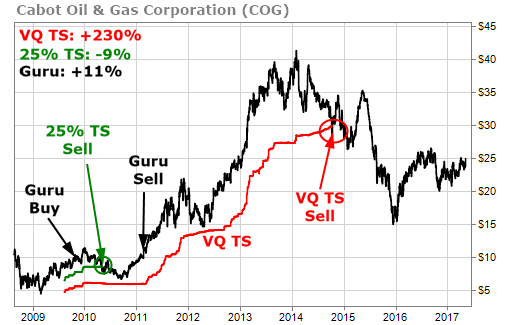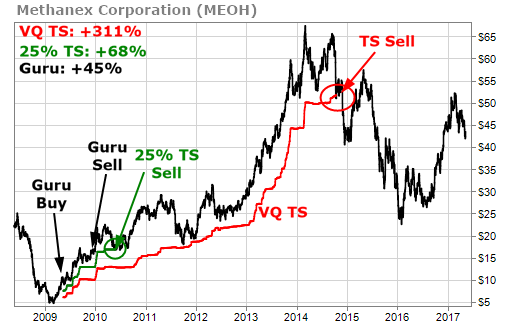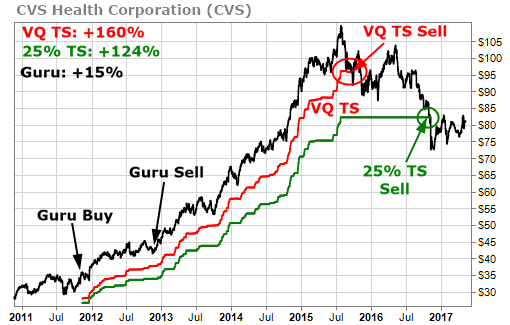Nearly all of the remarkable advances that are part of Tradestops today grew from one simple underlying question – how to improve upon the 25% trailing stop order.
It’s worth reminding ourselves every once in a while, how we got here… and just how simple – and valuable – the Tradestops Volatility Quotient (VQ) truly is.
To do so, let’s take another look at the three “billionaire stocks” that we studied last week, only this time, we’ll compare the Tradestops VQ stop losses with 25% trailing stop losses.
We looked last week at how Bill Gates got out of COG with an 11% gain whereas the Tradestops volatility based stop-loss strategy would have produced a 230% gain.
At the time of Gates’ investment in COG, the VQ on COG was 46%. You’d think that if a 46% trailing stop produced gains of 230% that a 25% trailing stop would have at least produced some respectable gains as well.
You’d be wrong. Using a 25% trailing stop on COG would have produced a loss of 9%.

COG is a great example of the fact that if you use too tight of a stop loss on a more volatile stock you’re almost guaranteed to lose money.
Prem Watsa had a similar situation with his investment in Methanex Corp.(MEOH).
In 2009, when Watsa first bought MEOH, the VQ for MEOH was 41%. A 25% trailing stop loss on MEOH would have actually produced gains of about 68%, those gains pale in comparison to the 311% gains that a 41% volatility-based trailing stop strategy would have produced.

We’ve seen what happens with stocks that have greater volatility than 25%. But what about a stock that has lower volatility?
At the time that Warren Buffett purchased CVS Health Corp. (CVS) in late 2011, the stock had a VQ of about 24%. As the stock moved higher in price, the VQ of CVS dropped to under 13%. This trailing stop was triggered with a gain of 160%.

But the 25% trailing stop didn’t trigger for another year and the gain was cut dramatically. This is a great example of taking too much risk in a stock.
Taking the right amount of risk on every stock in your portfolio is a powerful way to maximize the gains on all of your investments. It’s as powerful today as it was when I first developed the approach 3 years ago.
It’s good to see that it’s not just you and me that stand to benefit from smart risk management. It could help Gates, Watsa and Buffett as well.





